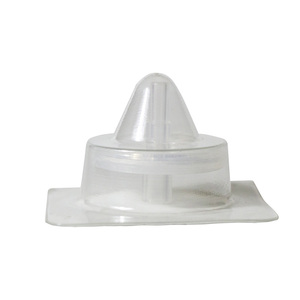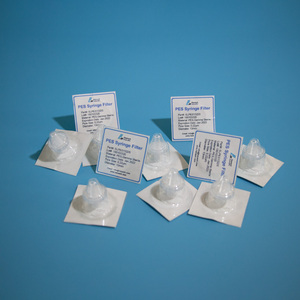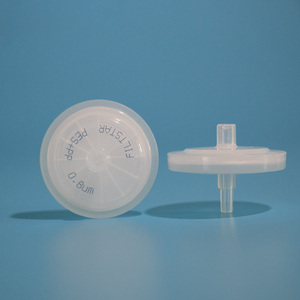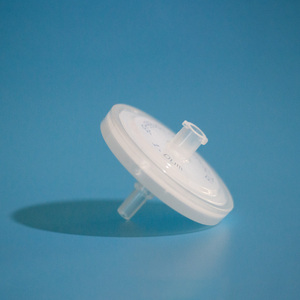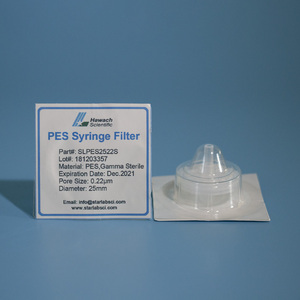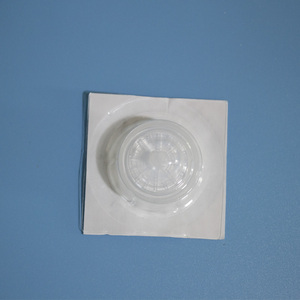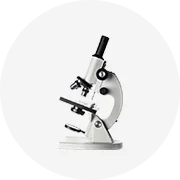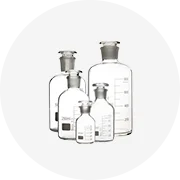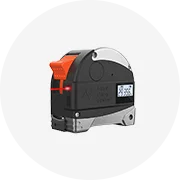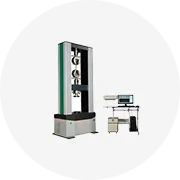Hplc ms
(423 products available)






BIOBASE Economic HPLC Machine High Performance Liquid Chromatograph UV Dector Auto Sampler HPLC






JOSTON MULTIFUNCTIONAL LAB SCALE VACUUM ALCOHOL ETHANOL STEAM SOLVENT Purification RECOVERY DISTILLATION COLUMN EQUIPMENT







MesuLab ME-HADV-2T with CE High Quality Touch Screen Lab High Viscosity Rotational Digital Viscometer Dv2t Price







Laboratory 60T 100T Big Automatic Isostatic Hydraulic Press Machine







High Purity Sodium Hydroxymethyl Cellulose Powder Water Soluble Thickener China Supplier HPMC High Quality Low Price







LC-MS2000 LCMS Machine HPLC System Chromatography Equipment High Performance Liquid Chromatography






Oil GC MS Gas Chromatography Tester Spectrometry Equipment GC-HPLC Gas Liquid Phase Chromatographic






Biobase Gas Chromatography Liquid Gcms GC/LC/MS FID TCD Factory
Popular in your industry






IChrom 5100(Type L) BIOBASE HPLC System Lc-ms Ms Spectrometry High Liquid Performance Chromatography






Biobase Gas Chromatography Liquid Gcms GC/LC/MS FID TCD Factory






Drawell LC-MS2000 LCMS HPLC System HPLC High Performance Liquid Chromatography






US High Liquid Chromatography Mass Spectrometry Triple Quadrupole Mass Lcms Gas Tandem Analysis Hplc Ms for Laboratory





Dealer Price 2mL HPLC Lab Glass Screw Top Vials Autosampler 2mL 9-425 Sample HPLC Vial for GC/MS






Biobase Laboratory Water Purification System RO DI Water Purifier for HPLC GC MS
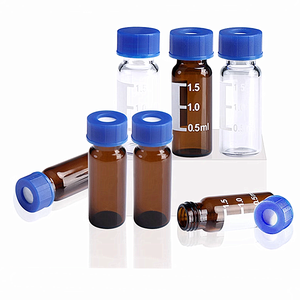





2ml Clear/Amber HPLC Vial with Cap & Septum - Agilent Compatible, GC/LC-MS Certified, for Chromatography & Headspace






HPLC/ICP-MS/ICP-AES/AAS/GC-MS Lab Water Purification System Type I Ultrapure Water Carbon PP Materials Featuring RO Membrane PLC






Aijiren Lab 11mm Crimp Top Aluminum Cap HPLC LC LC-MS GC Amber Glass Autosampler Vial 2ml



Micron Sterile Lab Wholesale Hydrophobic PVDF Syringe Filter for GC MS HPLC Prefilter






China Laboratory Equipment PTFE PES MCE PVDF Membrane Syringe Filter for HPLC LC/MS GC ICP-MS






Clovertek IAC108 IAC-T-2 Immunoaffinity Column for Quantitatively Measuring T-2 Toxin HPLC or LC-MS/MS






Ultra Pure Water System Factory Price, Used for Routine Experiments Such As AAS, AES, IC,MS, ICP, HPLC, Etc






Gc Ms Gas Chromatography Instrument Cromatografo De Gases Biological Wine Making Petroleum Chemical Laboratory Gas Chromatograph






High Performance Liquid Chromatography Instruments HPLC System Hplc Chromatograph


E Classical 3200 High Performance Liquid Chromatograph HPLC Electronic Measuring Instrument Hplc Equipment






BIOBASE High Performance Liquid Chromatography Hplc System Machine Laboratory with VFD Display Screen






DW-LC1620A Laboratory HPLC Machine Gradient System High-Performance Liquid Tester HPLC Column Chromatography Price






BIOBASE High Performance Liquid Chromatography HPLC With Auto Sampler Factory Price Discount






New Lab Water Purification System Ultrapure Water & DI Water Dual-Wavelength UV Lamp for HPLC/UPLC/LC-MS Lab Application






Aijiren Lab Chromatography Analysis 11mm Crimp Top Aluminum Cap HPLC LC LC-MS Autosampler Vial






AIYI 2ml Hplc Fitting Screw Top Vials Autosampler Sample Vial for GC/MS






Laboratory HPLC Machine With HPLC Pump Hplc Detector High Performance Liquid Chromatography Instrument






BIOBASE China J HPLC China High Performance Liquid Chromatography Agress1100(Type I) for Lab and Hospital
Top categories
About hplc ms
Types of HPLC MS
HPLC MS testing instruments come in various configurations to cater to specific analytical needs. Each type offers distinct advantages and resolves particular challenges in HPLC MS.
Quadrupole HPLC MS
This uses four rods to apply electric fields, which act on ions, allowing only ions of a certain mass to pass. It is popular for its precision in quantitative analyses. It works well with small molecules and pharmaceutical compounds.
Ion Trap HPLC MS
This type traps ions in electric fields and sequentially ejects them for detection. It offers high sensitivity, making it ideal for complex mixture analyses. It also works well for nonlinear compounds and requires smaller sample amounts. This is why it is mainly found in research laboratories.
ToF HPLC MS
This type measures the time it takes for ions to travel a certain distance. HPLC MS instruments with this type can give DNA sequences, proteins, and large biomolecules. Many DNA analysis tools use this type due to its ability to give high-resolution mass data. It also has a simple setup and is faster than other quad types.
Orbitrap HPLC MS
It works by trapping ions in an electric field. It then measures their oscillation frequencies to determine mass. It is well-known for offering unrivaled mass accuracy and resolution. This helps in identifying metabolites, proteins, and other biomomlecules.
It can also analyze samples that are heat sensitive. This makes it very useful for users who analyze environmental or food samples. The good thing about this type is its mass accuracy that is useful for users who analyze complex mixtures.
What Makes HPLC MS Durable
Durability is key when choosing HPLC MS for demanding environments. Some factors make these tools tough enough for heavy use.
Robust Ionization Techniques
These methods, like ESI and APCI, enable HPLC MS to analyze a broad range of compounds. They do this while keeping operational stability in check. APCI is especially good for non-polar and thermally stable compounds. It does this by exerting enough heat to ionize them without breaking them down.
High-Quality Materials
Manufacturers make HPLC MS systems with strong materials like stainless steel and aluminum. These parts deal with harsh chemicals and long-term use without degrading. Stainless steel also has resistance to corrosion. It is commonly used in HPLC MS parts that come in contact with solvents. Aluminum provides lightweight strength in the mass spectrometer.
Stable Vacuum Systems
ToF and Orbitrap mass spectrometers need good vacuums to work well. Their vacuum systems use tough seals and chambers to run for years. These systems have durable polymer or metal seals that reduce wear. They also have heat-resistant components that stand up to long sessions.
Smart Temperature Control
The HPLC MS machines use robust temperature controls to prevent damage. This helps to keep the machine at the right temperature whether it is working or being stored. This allows for precise analysis and keeps the device from overheating.
These sensors have materials and design elements that monitor heat changes. They also have airtight housings that stop dust from getting in and messing up the sensors.
Strong Housing and Design
Manufacturers design the outer cases of HPLC MS machines to take heavy use in labs. Strong housings in these devices shield them from bumps, dust, and harsh chemicals. The closed design of the MS often gives more protection than others. It keeps tiny parts safe and lets the machine work well for many years.
Commercial Value of HPLC MS
HPLC coupled with mass spectrometry provides high commercial value. It does this by offering better accuracy, efficiency, and versatility in multiple fields. Here are the various fields that benefit from this duality.
In Pharmaceutical Companies
They use HPLC MS to analyze drug compounds with great precision and speed. They also check the purity and stability of their products to meet strict safety rules. It helps them to speed up their research and make drugs of higher quality.
For Food and Beverage Analysis
The industry relies on HPLC MS to find and quantify vitamins, additives, and toxins. It helps companies to ensure that their products are safe and meet legal standards without consuming too much time.
In Environmental Testing
Companies use HPLC MS to find pollutants in water, soil, and air. It helps them quickly detect harmful chemicals, supporting regulatory compliance and public safety. This allows them to analyze a wider range of environmental samples faster and more accurately.
In Academic and Clinical Research
These spaces rely on the tool to provide data on biomolecules like proteins and metabolites. It is useful in medical tests, drug discovery, and disease research. The tool's ability to give precise mass measurements aids in the identification of complex biological compounds. This leads to new discoveries in treatments and disease mechanisms.
In Chemical Manufacturing
Businesses use it to measure the composition of raw materials and final products. The dual method allows for quick quality checks and better process control. The method also helps manufacturers make better chemical products and reduce waste.
For Testing Clinical Samples
The system can separate and identify compounds in complex biological fluids. It allows for multi-analyte testing in a single run. This boosts lab capacity and speeds up the analysis of vital biomarkers for diseases.
In the Regulation Compliance HPLC MS helps companies
It helps them to meet the stringent quality and safety regulations in their industries. It gives accurate and reliable data for reporting to regulatory bodies, reducing the risk of fines and legal penalties.
In Research and Development
HPLC MS is useful in speeding up the R&D cycles for new products, drugs, or techniques. Researchers can quickly analyze compounds, leading to faster time-to-market for new therapies or solutions. Its dual capabilities enable quick iterations in development processes, lowering overall R&D costs.
How to Choose HPLC MS
Selecting the right HPLC coupled with mass spectrometry requires careful consideration. Here are some key factors to keep in mind when making the choice.
Consider the Mass Range
A wide mass range allows users to analyze various compounds. Manufacturers make different types of mass spectrometers for these broad ranges. Smaller molecules need less mass, while larger biomolecules require more. Choosing the right mass range prevents the system from missing vital data or overloading.
Select the Right Ionization Method
Each ionization technique in HPLC MS works well with other types of compounds. For example, ESI is good for polar and bio compounds, while APCI works well for non-polar molecules. Choosing the right method will give better results and more accurate data. Using a suitable ionization method will also reduce extra analyses and increase workflow.
Assess the Sensitivity
Sensitivity is very important for analyzing compounds present in low amounts. It can identify trace levels of substances and go as far as picogram per microliter. Choosing a sensitive HPLC MS will give better results in finding minor components. This saves time and increases accuracy, especially when analyzing complex samples.
Check the Resolution
Using a high-resolution mass spectrometer leads to better peak identification and compound differentiation. It is useful when analyzing closely related compounds or isotopes. The clear separation prevents data overlap. This makes the analysis much more accurate and reliable.
Look at the Production Capacity
Consider how much the system can analyze in a given time. This system can handle high sample volumes, making them ideal for busy labs. It enables quicker results and high throughput. Make sure the system can match the lab needs for efficiency and timely reporting. High throughput results will also improve the lab's operating performance.
Consider the Software Quality
Advanced software in HPLC MS makes data analysis and method optimization faster and easier. It offers quick data processing and peak identification. It also provides good results with lower labor costs. User-friendly tools also enable quick training for analysts.
Evaluate the Upkeep Needs
Some HPLC MS systems use costly parts and have long maintenance times. This adds to the lab's total cost of ownership. Determine the lifetime of the components and their replacement rates. Users will then have an idea of how much work the system will need to stay functional.
Q&A
Q1: Which factors affect the precision attained in an HPLC MS?
The two main factors are the quality of the chromatographic column and the type of ionization used in the MS. A well-made column will ensure good peak separation. At the same time, the right ionization technique gives better accurate mass readings. Careful optimization of these two elements will improve precision and yield.
Q2: Which factors increase the lifetime of HPLC MS?
These factors include using quality materials, robust designs, strong ionization techniques, and good temperature controls. The good quality parts can handle corrosive chemicals and wear. Durable materials also resist damage from frequent use. All this work together to keep the device safe and working for longer.
Q3: Can the HPLC MS be used for enzymatic activity assays?
Yes, users can employ HPLC MS to study the products and substrates of enzyme reactions. It offers quick and accurate readings of how enzymes act on compounds. This makes it useful for many research and drug discovery studies.
Q4: Do HPLC and MS need to be done separately for effective results?
No, they offer better results when done together. It couples the separation power of HPLC with the mass analysis of MS for complete study. They enhance each other to give precise compound identification and analysis for effective results.
Q5: What are the most common ionization techniques found in HPLC MS?
They mainly use ionization techniques like ESI, APCI, and DART. ESI is popular for analyzing large biomolecules like proteins. On the other hand, APCI suits small, non-polar compounds. Finally, DART gives quick surface analysis without much prep work. Users can choose any of these three methods depending on their needs.














